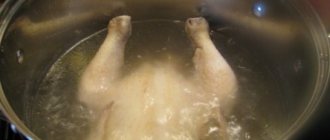Nicotine
When smoking, snorting, chewing tobacco, or using an e-cigarette, nicotine enters the human body. For some time, this neurotropic poison lingers in the body. Medical tests can detect traces of it in the body. In the article, the reader will find out how long it takes for the alkaloid to be completely eliminated from the body.
Metabolism of nicotine in the human body
When smoking cigarettes, approximately 10 percent of the toxic substance enters the body. In addition, this toxin easily enters the bloodstream through the skin, mucous membranes or digestive organs. Therefore, you can be poisoned by nicotine if, say, you spill vaping liquid on your skin. For the same reason, snuff and chewing tobacco are dangerous.
During passive smoking, a person also receives nicotine. Some of it remains in the blood for some time.
The amount of nicotine that enters the body when smoking depends on many different factors. First of all, this is the presence or absence of a filter in the cigarette. Also, the amount of poison entering the body is noticeably greater if a person sniffs or chews tobacco.
The half-life of nicotine is 2 hours. This means that 2 hours after smoking a cigarette, half of the toxic alkaloid is removed from the body. After the same time, the effect of nicotine completely disappears. This forces a person to smoke another cigarette.
Nicotine is processed in the liver. In hepatocytes, this substance is converted into metabolites, including anabasine, cotinine and others. Cotinine stays in the body the longest. A cotinine test is used to determine whether a person has a craving for smoking. Cotinine is completely removed from the blood 2 weeks after smoking the last cigarette. If a person smokes from time to time, then cotinine is not detected in the urine after 4 days. The breakdown products of this substance last the longest in the hair and nail tissue.
By analyzing hair and nail plates, you can determine whether a person has smoked. However, doctors rarely use such methods due to their high cost.
Having a half-life of 2 hours, nicotine completely disappears from the blood 8 hours after smoking. After the same amount of time, the alkaloid is found in the urine as the kidneys begin to excrete it. This process lasts on average a day. After this, only decay products of the neurotropic poison are found in urine.
It should be borne in mind that nicotine is excreted from the body in small doses. Even if there is no this alkaloid in the blood, the tissues and cells contain other substances that came with tobacco smoke. Some of them are carcinogenic.
Determination of nicotine and its metabolite (cotinine) in urine
A test of nicotine and its metabolite in a single sample of urine, used to assess the level of tobacco (nicotine) consumption, especially when monitoring patients receiving nicotine replacement therapy or with passive exposure to tobacco smoke.
Synonyms Russian
Determination of nicotine and its metabolite in a single portion of urine.
English synonyms
Nicotin, cotinine, Urine.
Research method
Gas chromatography-mass spectrometry (GC-MS).
What biomaterial can be used for research?
A single portion of urine. How to properly prepare for research?
- No special preparation is required.
General information about the study
Nicotine is the main alkaloid in tobacco and has various effects on the body when consumed. Short-term stimulant effects of nicotine include increases in blood pressure, heart rate, and plasma glucose levels. Long-term tobacco use is associated with an increased risk of atherosclerosis, chronic obstructive pulmonary disease, arterial hypertension and various types of malignant neoplasms (larynx, oral cavity, lungs, pancreas, esophagus and other organs). Nicotine undergoes chemical transformations in the liver with the formation of metabolites (cotinine, 3'hydroxycotinine).
The entry of nicotine and other tobacco components into the systemic circulation depends on the concentration of nicotine in the product used and the method of its use. Thus, the highest concentration of nicotine is found in cigarettes, and the lowest in chewing tobacco. When smoking tobacco, part of the nicotine undergoes pyrolysis or is lost in the side streams of smoke and does not enter the body. When chewing tobacco, most of the nicotine is swallowed and metabolized in the liver by cytochrome oxidase CYP2A6 to form less active metabolites, and only less is absorbed from the surface of the buccal epithelium and ultimately reaches the brain. Taking into account these factors, it is not possible to determine the dose of nicotine actually consumed based on data on the amount of tobacco consumed (for example, cigarettes smoked). To assess the level of tobacco consumption, the concentration of nicotine and its metabolites is examined.
Nicotine and its metabolites can be tested in blood, saliva, urine, and skin appendages (hair and nails). Urine testing seems to be the most convenient way, since it is a non-invasive test that is not inferior in information content to a blood test. The study of nicotine as a laboratory marker to assess tobacco use has some limitations. Thus, nicotine has a fairly short half-life (11 hours), and its concentration in plasma and urine strongly depends on renal function and is characterized by variability throughout the day. For this reason, the study of nicotine is complemented by a study of the concentration of its metabolites, primarily cotinine. Cotinine is the main metabolite of nicotine, characterized by a longer half-life (18-20 hours), and its concentration is less subject to daily fluctuations. Unlike nicotine, cotinine excretion into urine is independent of urine pH and volume. In addition, the concentration of cotinine in urine is 4-6 times higher than its concentration in blood or saliva, which makes urine testing the most sensitive test for determining cotinine. This is especially important with low dose tobacco (nicotine) exposure.
Studying the level of cotinine in urine also has prognostic value. A urine cotinine level above 1,000 ng/ml indicates a high degree of nicotine dependence (sensitivity 71.4%, specificity 74.4%).
Various methods can be used to determine nicotine and its metabolites in urine: gas chromatography/mass spectrometry (GC/MS), liquid chromatography/mass spectrometry (LC/MS), radioimmunoassay, enzyme-linked immunosorbent assay, and others. GC/MS is one of the most sensitive analytical methods and can detect nicotine and its metabolites at concentrations less than 0.05 ng/ml.
Passive smoking also poses a real health threat. Passive exposure to tobacco smoke has been shown to increase the risk of cardiovascular and respiratory diseases by 30%, and is also associated with the risk of developing lung cancer. The detection of nicotine in the blood of non-smoking patients may indicate passive exposure to tobacco. Examples are infants of smoking mothers and preschool children exposed to tobacco dust.
When assessing the results of the study, it should be remembered that the concentration of nicotine and its metabolites in the blood and urine strongly depends on many factors, primarily the metabolic activity of the liver. Nicotine clearance depends on age and gender. Infants and the elderly have a reduced nicotine clearance compared to adults. Men are characterized by a higher nicotine clearance rate compared to women. The concentration of nicotine and its metabolites in urine depends on the rate of renal excretion. Renal clearance of nicotine and its metabolites is reduced by 50% in moderate chronic kidney disease (CKD) and up to 94% in severe CKD.
Cigarette smoking is associated with the risk of chronic intoxication with certain heavy metals, such as cadmium, lead, chromium, nickel and others. To obtain the most complete information about the patient’s condition, additional laboratory tests are recommended. The result of the analysis should be interpreted taking into account the data of clinical, laboratory and instrumental studies
What is the research used for?
- To assess the level of tobacco (nicotine) consumption;
- assessing the severity of nicotine addiction.
When is the study scheduled?
- In the treatment of nicotine addiction;
- when monitoring patients receiving nicotine replacement therapy;
- when observing patients exposed to passive exposure to tobacco smoke (passive smoking).
What do the results mean?
Reference values
Nicotine: non-smokers - 0-18; passive smokers - 18 - 200; active smokers - more than 200 ng/ml.
Cotinine: non-smokers 0 - 21; passive smokers 21 - 300; active smokers - more than 300 ng/ml.
Improved result:
- recent use of tobacco (nicotine);
- passive exposure to tobacco;
- eating large amounts of food rich in nicotine.
Decreased result:
- norm.
What can influence the result?
- Time elapsed since tobacco (nicotine) use;
- age;
- floor;
- presence of kidney and liver diseases;
- urine pH;
- use of inhibitors (methoxalen, tryptamine, warfarin) and activators (menthol, grapefruit juice, rifampicin, dexamethasone, phenobarbital) of the CYP2A6 enzyme.
Important Notes
- The result of the analysis should be interpreted taking into account additional clinical, laboratory and instrumental studies.
Also recommended
[06-092] Nickel in the blood
[06-089] Chromium in serum
[06-096] Cadmium in serum
[06-099] Lead in the blood
[06-234] Comprehensive analysis for the presence of heavy metals and trace elements (23 indicators)
[06-235] Expanded comprehensive analysis for the presence of heavy metals and trace elements (40 indicators)
Who orders the study?
Narcologist, general practitioner, pediatrician, epidemiologist.
Literature
- Sarkar M, Muhammad-Kah R, Liang Q, Kapur S, Feng S, Roethig H. Evaluation of spot urine as an alternative to 24h urine collection for determination of biomarkers of exposure to cigarette smoke in adult smokers. Environ Toxicol Pharmacol. 2013 Jul;36(1):108-14.
- Hukkanen J, Jacob P 3rd, Benowitz NL. Metabolism and disposition kinetics of nicotine. Pharmacol Rev. 2005 Mar;57(1):79-115. Review.
- Jacob P 3rd, Yu L, Shulgin AT, Benowitz NL. Minor tobacco alkaloids as biomarkers for tobacco use: comparison of users of cigarettes, smokeless tobacco, cigars, and pipes.Am J Public Health. 1999 May;89(5):731-6.
- Avila-Tang E, Al-Delaimy WK, Ashley DL, Benowitz N, Bernert JT, Kim S, Samet JM, Hecht SS. Assessing secondhand smoke using biological markers. Tob Control. 2013 May;22(3):164-71.
- Jung HS, Kim Y, Son J, Jeon YJ, Seo HG, Park SH, Huh BR. Can urinary cotinine predict nicotine dependence level in smokers? Asian Pac J Cancer Prev. 2012;13(11):5483-8.
How can you measure the concentration of nicotine in the body?
There are several ways to measure the level of alkaloid in the blood.
Blood analysis
This is an accurate test that detects both nicotine and cotinine. A blood test to determine these substances is also the most expensive, so it is rarely used in clinical practice.
Saliva studies
Such tests are the most sensitive of all survey methods. They are also the most accessible. Saliva contains levels of nicotine or cotinine that are one third higher than those in blood serum. In addition, saliva testing is one of the most accessible.
The material is collected by performing a swab of the oral cavity. The cotton swab is placed in a sealable container.
Urine tests
Higher concentrations of cotinine can be found in urine, 6 times higher than those in blood. This analysis is relatively simple. To carry it out, you just need to soak the test paper for a few minutes. Then she shows the result.
Hair research
This is the most reliable, but at the same time the most complex method for determining the presence of nicotine or its metabolic products in the human body. This is also the most expensive and slowest method. Hair may be tested in cases where the results of the main analysis are questionable. The advantage of this analysis is that hair can retain residues of nicotine, cotinine and other breakdown products for three months.
How long does it take for nicotine to dissipate and leave the blood?
How long does it take for nicotine to disappear from the blood? Nicotine is an alkaloid that serves as a stimulant for the body. The length of time nicotine remains in the body depends on the amount and type of tobacco used.
An indicator of nicotine use is the presence of cotinine. Several tests are capable of detecting nicotine from 2 days to 3 months after smoking.
Testing is often done to detect the use of the following tobacco products: chewing tobacco, pipe tobacco, cigars and cigarettes.
A blood test for nicotine can detect its presence and amount. The presence of nicotine is indicated by the presence of cotinine and anabasine in the blood (metabolic derivatives of nicotine). Nicotine in the process of metabolism is converted into cotinine and anabasine, then enters the blood.
Once metabolized, nicotine is detectable 1-3 days after the last use. Cotinine remains in the body for a longer period.
Its manifestations can be detected from 1 to 10 days after the last use. The levels of nicotine and cotinine in the blood can vary depending on the amount of nicotine consumed, the state of health, and the age of the person.
Under circumstances, false positive results – thiocyanate contamination – are observed.
Blood test results will be false positive in people who work in metal processing areas where high levels of thiocyanate are present.
This is possible when consuming almonds, cabbage, mustard and broccoli (contains thiocyanate), after taking amphetamines.
Test for smokers
Factors affecting the rate of nicotine elimination
Medical research suggests that nicotine is completely removed from the body in about 3 days, and its breakdown products in about 2 weeks. The speed of this process depends on the following factors:
- the number of cigarettes consumed by a smoker;
- smoking frequency;
- nicotine concentrations in cigarettes;
- method of consumption of tobacco products (smoking, chewing, snorting or vaping);
- simultaneous use of alcohol and drugs (in this case, the liver is overloaded, and the breakdown of the alkaloid occurs more slowly);
- age (the older a person is, the longer toxins stay in his body);
- gender (the female body gets rid of poison faster, especially if the woman is taking hormonal medications);
- heredity;
- race (representatives of the Caucasian race metabolize nicotine faster than Asians and residents of the African continent);
- filtration capacity of the kidneys.
Nicotine and its metabolic products are also excreted through sweat, lungs and saliva. During lactation in women, cotinine and other metabolites are found in milk.
Some medications also affect the rate of nicotine elimination. Antibiotics and barbituric acid preparations accelerate the breakdown and elimination of the alkaloid and its breakdown products. This process is slowed down by some antifungal agents and drugs for the treatment of arterial hypertension.
What is nicotine withdrawal?
In narcology, nicotine withdrawal is understood as a type of withdrawal syndrome. Thus, the body reacts to an incomplete dose of nicotine. Indeed, nicotine is a drug that causes addiction, and it is serious enough to consider smoking dangerous to health. How long does withdrawal last? Its first symptoms in experienced smokers can be observed within 1-2 hours after the last puff of a cigarette or cigarette. The total duration of withdrawal will depend on the following factors:
- tobacco smoking experience;
- gender;
- age;
- number of cigarettes smoked per day;
- features of the nervous system.
Some people find it very difficult to quit smoking, while others quit relatively easily. However, there are only a few such “lucky” ones. For most, withdrawal lasts long and painfully. As a result, it is impossible to quit smoking.
Symptoms of withdrawal include the following:
- irritability;
- insomnia;
- headache;
- changes in blood pressure;
- cough;
- disorders of the digestive system;
- fatigue;
- decreased immunity;
- increased appetite;
- strong desire to smoke.
Smoking itself is harmful to the human body. But it is especially dangerous for people whose health is weakened by illness. Therefore, if you decide to quit smoking, contact a drug treatment center and we will help you give up this dangerous habit.
Ways to speed up the removal of nicotine from the body
There are effective methods that allow you to speed up the removal of nicotine and its breakdown products from the body. Experts recommend such measures to cleanse blood and tissues.
- Drinking large amounts of liquid. It is best to drink water, fruit and vegetable juices. To speed up the process, it is recommended to take diuretic decoctions.
- Visiting a sauna or steam bath. Along with sweat, not only harmful metabolites are released, but also products of basal metabolism. The sauna helps to recover from any type of intoxication.
- Exercise, running, walking in the fresh air.
- Treat liver and kidney pathologies in a timely manner. Damage to hepatocytes leads to the fact that nicotine takes longer to be eliminated from the body.
When trying to break a bad habit, a person may experience breakdowns. To prevent this from happening, you need to find a hobby. An interesting activity will both distract from thoughts about a cigarette and bring pleasure, which is important in the process of acquiring the habit of a healthy lifestyle.
If you have a strong desire to smoke, it is recommended to temporarily use nicotine replacement medications. These can be tablets, patches, chewing gum. Nicotine-containing medications will make the process of quitting smoking less painful. In this case, the concentration of the alkaloid in the blood will decrease gradually.
When consuming tobacco products, nicotine enters the human body. It lingers in the blood and tissues for some time. The alkaloid and its breakdown products are still present in the blood and urine for several days after smoking the last cigarette. Simple and effective methods allow you to speed up the elimination of toxic substances.
Ways to cleanse the body
It is impossible to say exactly how long it takes for nicotine to be eliminated, since the indicator is different for each person and it depends on many factors. You can wait until the body cleanses itself or help it by using medications, folk remedies, and including certain foods in the menu.
The medical approach is based on the use of expectorant and metabolic drugs. They are recommended to be taken in the first days after quitting smoking, while the body still contains nicotine. The most popular include:
- Ambroxol accelerates the cleansing of the lungs and bronchi from phlegm and, as a result, toxins;
- Mucaltin cleanses the airways and is especially effective for dry coughs;
- Gedelix, due to the expansion of the bronchi, allows you to clean them as efficiently as possible from harmful resins and mucus;
- ACC is good at removing viscous sputum containing harmful substances;
- Rotokan ensures that nicotine is quickly eliminated, and in addition, it increases the local immunity of the lungs.
Rotokan
Nicotine-containing preparations (patches, chewable lozenges, tablets) help to painlessly survive the acute phase after quitting alcohol. Thanks to them, a small amount of nicotine remains in the body, which relieves physiological discomfort.
Folk recipes for cleansing the body of nicotine:
- herbal decoctions based on oregano, coltsfoot, plantain;
- infusion of licorice root or marshmallow root;
- oat broth;
- infusion of flaxseed and potato starch;
- inhalation of infusions of medicinal plants (wormwood, pine needles, birch leaves, chamomile) and essential oils.
Nutrition is of great importance. In the process of quitting smoking, to cleanse the body, it is necessary to include the following products in the diet:
- legumes, zucchini, celery – protect the lungs from the toxic effects of harmful substances;
- milk – quickly removes nicotine from the body;
- carrot, apple, lemon and orange juice speed up the process of eliminating toxins;
- vegetables and fruits high in vitamin C not only speed up metabolism, but also remove the unpleasant aftertaste of tobacco.
If you approach the problem in a comprehensive manner, the results will appear much faster.
How long does it take to eliminate nicotine?
The half-life of nicotine is one and a half to two hours.
Therefore, if you do not continue to take it in one form or another, it will completely leave the body in a few days. This means that after 120 minutes the nicotine concentration will be halved, after another two hours the remaining amount will be halved again, and so on, until nicotine is completely gone from the body. On average, nicotine elimination occurs in two to three days. The speed of the process can be influenced by factors such as a person’s age, state of health, method of nicotine consumption, length of smoking history, number of cigarettes smoked, and lifestyle.
- The older a person is, the slower the metabolic processes in the body are, and, accordingly, the elimination of nicotine takes longer.
- The main amount of nicotine is excreted in the urine; healthy kidneys ensure that the body gets rid of the toxin more quickly.
- The stronger the cigarettes, the greater the amount of nicotine that enters the body, which means it will take longer to come out.
- Nicotine consumed through chewing tobacco is eliminated more slowly than when smoking cigarettes.
Read more about nicotine...
Cleaning at home
The lungs suffer the most from decay products. Therefore, it is better to start the cleaning procedure with them. To increase the effectiveness of the procedures, it is important to organize a healthy environment, namely: ventilate the room where the person is located several times a day. Cleansing the lungs of harmful substances is done using a decoction of bay leaves and a mixture of honey and lemon, as well as many other means.
Bay leaf decoction
A decoction of bay leaves not only helps cleanse the lungs of tars, but also stimulates the functions of the immune system. To prepare the product, you need to pour a glass of boiling water over six sheets and leave for 12 hours. Drink 1/3 cup of the decoction before meals. Bay leaf remedy should not be used during pregnancy.
Honey and lemon mixture
To prepare the lemon-honey mixture, you need to mince these products in equal quantities. Reception is indicated for a month, 1 tablespoon each time before meals. After this, you can take a short break (for 10 days) and repeat the intake. Consuming the mixture may cause excessive sputum production. However, this is a normal reaction of the body.
The blood vessels of smokers suffer just as much as the lungs. Violation of their functions can lead to many serious diseases. Traditional medicine suggests cleaning blood vessels with milk-based products and decoctions of medicinal herbs. Therapeutic gymnastics has a good effect.
Milk
Black tea with added milk is one of the most effective ways to maintain vascular tone. To properly prepare the drink, you need to mix boiled milk with tea in a ratio of 1:5. You can add a little sugar to improve the taste.
Herbal syrup
A mixture of medicinal herbs and honey perfectly helps to recover from smoking. To prepare the mixture, you need to mix medicinal chamomile flowers, birch buds and yarrow inflorescences in equal parts. Pour a tablespoon of herbal mixture into 0.5 liters of boiling water and leave for half an hour. Then strain the broth and divide into two equal parts. Drink the first part at night, after adding a teaspoon of honey to the medicine. Drink the second part of the decoction in the morning on an empty stomach. The drug is taken for three months.
Gymnastics
Light morning exercises aimed at maintaining all muscle groups contribute to the improvement of blood vessels and their maintenance at normal levels. Swimming, jogging, and brisk walking are also effective.
Infusion of violet and oregano
Equally important is cleansing the gastrointestinal tract, kidneys and urinary system from toxic substances. The degree of cleansing of the entire body depends on the effectiveness of the sanitization of the digestive and excretory systems. Since the kidneys play an important role in eliminating toxins and other harmful substances, it is important to support their proper functioning.
In order to help the digestive and excretory systems successfully cope with this task, it is recommended to take mucous decoctions, in particular from oats. A herbal infusion based on violet and oregano also has an excellent effect on cleansing the kidneys. You need to mix 1 tbsp. l. these herbs, pour 400 ml of boiling water and leave for a couple of hours. Strain the product and drink throughout the day in 3 doses. Course duration is up to 30 days.
Oats
The product is taken warm on an empty stomach or two hours after a meal. It is not recommended to drink oatmeal broth. To improve its taste, you can sweeten it, add some fruit or juice to it.
If constipation occurs after taking oatmeal broth, you should drink a glass of water before using the product. In the first few days after taking it, a former smoker's condition may worsen. Sometimes there is increased sputum production. But this is a temporary process, after the cessation of which there is a rapid improvement in the general condition.
How does a smoker feel when nicotine comes out?
Symptoms of nicotine withdrawal include: irritability, sleep disturbances, intense cravings, depression, anxiety and increased appetite. Peak symptoms disappear within a few weeks. Sometimes nicotine withdrawal symptoms take longer.
Nicotine withdrawal affects behavioral factors and leads to severe withdrawal symptoms. Nicotine replacement therapy includes the use of chewing gum, patches and inhalers.
They reduce the pharmacological aspects of withdrawal. Psychological therapy helps relieve withdrawal symptoms and urges to start smoking again.
What happens to the body after quitting smoking
It is important to understand that there is a difference between the rate at which nicotine is eliminated and the rate at which the body recovers after quitting smoking. Regeneration of the digestive and respiratory systems will be possible no earlier than 12 months after a person quits smoking.
Normalization of blood circulation will occur after about 4 months. Complete cleansing of the body will take more than one year.
Nicotine itself leaves the body's tissues quite quickly. The danger comes from other substances that accumulate in internal organs and are eliminated over a long period of time.
When people use tobacco products for at least some time, some of the nicotine remains in the body even after they finally quit the bad habit. Using special tests, doctors can detect nicotine in a person's urine, blood, saliva, hair and even nails.
Nicotine is an addictive, or addictive, substance found in regular and electronic cigarettes.
When a person smokes a cigarette, his body absorbs up to 90% of the nicotine it contains. Traces of nicotine will remain in the body long after the effects of the substance wear off.
In this article, we will explain how long it takes for the body to completely eliminate nicotine. In addition, we will talk about methods by which you can speed up its release.
The effect of nicotine on blood vessels when it enters the blood
Nicotine constricts blood vessels, less blood enters the tissues, increasing the risk of skin necrosis. This problem affects smokers. If a person lives or associates with a circle of people who smoke, he will suffer the effects of nicotine.
Nicotine gum produces similar results. Contact with the substance should be discontinued to prevent undesirable consequences.
E-cigarettes include some nicotine, which constricts blood vessels. The substance causes vasoconstriction, or decreased blood flow to healing tissue. Smoking cigarettes is especially bad before surgery.
The carbon monoxide in cigarettes causes red blood cells to not release the necessary oxygen required for tissue healing. This affects all postoperative tissues and tissue necrosis (death) may occur.
Blood is a means of delivering oxygen and nutrients to the tissues and organs of the body. Without this they die. Vessels (circulatory system) are blood vessels.
The inside of a healthy vessel is covered with a thin Teflon-like layer of cells that allows smooth blood flow. Carbon monoxide from cigarette smoke damages the layer of cells, allowing fats to remain on the walls of blood vessels.
The additional junk food a smoker consumes turns into fat, which enters the bloodstream with each new layer of nicotine.
Volumes of stored fats stick to the walls of blood vessels damaged by toxic carbon monoxide. It's getting worse. Nicotine, inside the blood vessels, causes the growth of new blood vessels (vascularization).
They provide a rich supply of oxygen and nutrients to fats and plaques adhering to damaged vessel walls.
This internal vascularization of nicotine (vessels within vessels) hardens the smoker's arteries and veins, further accelerating their narrowing and clogging.
Other toxic substances
So, after two or three days, nicotine completely disappears from the body, and after a week, cotinine, which is a breakdown product of nicotine, “goes away.” Just seven days and no traces of nicotine remain in your body. Wonderful, isn't it?
But, unfortunately, nicotine is only one, and by no means the most dangerous, of more than 4,000 toxins that enter the body with cigarette smoke. And it would be naive to believe that a week after quitting smoking, a person who has been poisoning himself with tobacco smoke for years will get rid of all poisons, as if by magic.
Do not confuse the concepts of “rate of nicotine elimination” and “getting rid of the consequences of smoking.” And if nicotine is eliminated in a matter of days, then when cleansing the body of the effects of smoking, the count goes on for months and years.
- It will take up to three years to completely clear your lungs of tar, and the likelihood of lung cancer will decrease only after 10 years of quitting smoking. However, within six months you may notice a significant improvement in your breathing.
- Recovery of the digestive system can take several months, and sometimes a year or longer.
- Blood circulation normalizes within 3-4 months.
- It can take up to 15 years to completely restore the body to the level of a non-smoker!
The conclusion suggests itself: the sooner you give up smoking, the sooner your body will start the self-healing process, the faster you will cleanse yourself of accumulated toxins. But that is not all! You don’t have to just sit and wait for waste and toxic substances to leave your body. It is in your power to “spur” this process:
Drink enough water
Most toxins are eliminated through the urinary system, and drinking enough fluid will speed up the cleansing process.
Saturate your body with oxygen
A sufficient amount of oxygen helps accelerate metabolic processes and break down toxins. Regular ventilation of the home, walks in the fresh air, in the forest, will have a beneficial effect on health and well-being.
Bath
If you have no contraindications, go to the bathhouse! The Russian bath is a wonderful help for cleansing the body.
Vitamins
Take enough vitamins - your body really needs them.
Lead an active lifestyle
Do yoga, take long walks, do morning exercises, the main thing is not to overdo it, allow yourself to adapt to the new rhythm of life.
How nicotine enters the blood
The dangerous substance somehow affects the mucous membranes, skin and lungs.
When inhaled by a passive or active smoker, nicotine, along with smoke, enters the lungs, affecting all other structures encountered along the way - the oral cavity, nasopharynx, trachea, bronchi. Each of these parts of the respiratory system will suffer.
Subsequently, nicotine goes into the blood and brain. This is the final stop, and in the future this organ sends unpleasant signals to the entire body. For example, the level of sugar in the blood may increase, due to the dilation of blood vessels, blood pressure rises, its values can fluctuate to extremely high levels.
Nicotine tests
Nicotine tests are sometimes performed when entering into contracts with insurance companies, as well as for work-related reasons. Such tests show how great the effect of nicotine is on the body of a particular person and whether the body is under such influence at all. When performing tests, doctors look for traces of nicotine and other related substances, such as cotinine.
It is more convenient to evaluate the use of tobacco products based on cotinine content, since it remains in the body longer than nicotine. The half-life of nicotine is only 2 hours, while the same figure for cotinine reaches 16 hours.
During the analysis, doctors may take samples of the following body parts for later examination in the laboratory:











